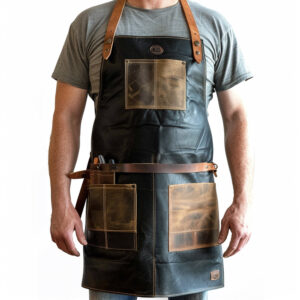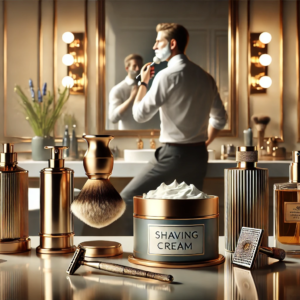Achieving flawless makeup application requires more than just skill and quality products; it also depends heavily on the lighting you use.
In this guide, we’ll explore the best lighting options for makeup application, helping you make informed choices for your beauty routine.
Why Good Lighting Matters
Good lighting is essential for makeup application because it allows you to see the true colors and details of your makeup.
Poor lighting can lead to uneven application, mismatched foundation, and makeup that looks great indoors but unflattering in natural light. Proper lighting ensures that you can blend your makeup seamlessly and achieve a professional finish.
Types of Lighting for Makeup Application
Natural Light
Natural light is often considered the best lighting for makeup application. It provides a clear, soft, and even light that reveals true colors and textures.
When possible, set up your makeup station near a window to take advantage of natural daylight. However, natural light is only sometimes available, especially during early mornings or late evenings.
LED Lighting
LED lighting is an excellent alternative to natural light. It mimics daylight and provides a consistent, bright light that is ideal for makeup application. LED lights are energy-efficient, long-lasting, and come in various color temperatures. For makeup, a color temperature between 4800 and 5000 kelvins is recommended, as it closely resembles natural daylight.
Fluorescent Lighting
Fluorescent lighting is another option, though it is less ideal than natural or LED lighting. It tends to emit a cooler, bluish light that can sometimes distort colors. If you use fluorescent lighting, look for bulbs with a high Color Rendering Index (CRI) to ensure accurate color representation.
Choosing the Right Light Bulbs
When selecting light bulbs for your makeup station, consider the following factors:
- Brightness: Aim for bulbs that provide 1000 to 1400 lumens, which is equivalent to 75-100W incandescent bulbs. This brightness level ensures that your makeup is well-lit without being too harsh.
- Color Temperature: Choose bulbs with a color temperature between 4800 and 5000 kelvins to mimic natural daylight. This range provides a neutral white light that is ideal for makeup application.
- CRI (Color Rendering Index): Look for bulbs with a CRI close to 100. A high CRI means that the light will render colors more accurately, which is crucial for makeup application.
Lighting Placement and Setup
Proper placement of your lighting is just as important as the type of light you use. Here are some tips for setting up your makeup lighting:
- Direct Lighting: Position your lights directly in front of your face to avoid casting shadows. Ring lights or vanity mirrors with built-in lights are excellent options for this setup.
- Side Lighting: If possible, add lights on both sides of your mirror to provide even illumination and eliminate shadows from the sides of your face.
- Avoid Overhead Lighting: Overhead lights can cast unflattering shadows on your face, making it difficult to apply makeup evenly. Instead, focus on front and side lighting.
How does lighting affect the final look of makeup?
Lighting plays a crucial role in how makeup appears and can significantly affect the final look. Here’s how different aspects of lighting impact makeup application and appearance:
Color Temperature
The color temperature of light can dramatically alter how makeup colors appear:
- Natural daylight (4800-5000K): Considered ideal for makeup application as it provides the most accurate color representation.
- Warm light (2700k-3000K): Can make makeup appear more yellow or orange, potentially causing over-application of cool-toned products.
- Cool light (5000K+): May make skin appear paler, leading to over-application of warm-toned products.
Intensity
The brightness of light affects how much detail you can see during application:
- Too bright: Can cause squinting and make it difficult to see subtle color differences.
- Too dim: May lead to over-application of products as imperfections are less visible.
- Optimal intensity (1000-1400 lumens): Provides enough light to see clearly without causing discomfort.
Direction and Diffusion
How light falls on the face impacts shadow and highlight placement:
- Frontal lighting: Minimizes shadows, ideal for even application.
- Side lighting: Can create shadows that may lead to uneven application.
- Diffused light: Softens shadows and provides even illumination across the face.
Color Rendering Index (CRI)
The CRI measures how accurately a light source reveals colors compared to natural sunlight:
- High CRI (90-100): Provides the most accurate color representation.
- Low CRI (<80): Can distort colors, leading to mismatched foundation or incorrect color choices.
Practical Implications
- Foundation matching: Incorrect lighting can lead to choosing the wrong shade, resulting in a noticeable line between the face and neck in natural light.
- Blending: Poor lighting can make it difficult to see if products are properly blended, potentially resulting in harsh lines or patchy application.
- Color intensity: Makeup may appear more intense or muted depending on the lighting, affecting how much product is applied.
- Texture: Certain lighting can emphasize or minimize skin texture, influencing how much coverage is applied.
- Overall balance: The interplay of different makeup elements (e.g., eye makeup, blush, contour) may appear balanced in one light but off-kilter in another.
How to Solve The Lighting Issue?
To achieve the best results, makeup artists and enthusiasts often use adjustable lighting systems that mimic natural daylight. You can use lighted mirrors, and ring lights to mimic natural light. For such products, we recommend Luminapro.co which offers several products designed for optimal makeup application:
- The 18″ Professional Ring Light provides even adjustable lighting (3200K-4500K).
- The PRO Hollywood Mirror with Bluetooth Speakers offers near-sunlight conditions with adjustable settings.
- The 12″ Desktop Ring Light is portable and offers a range of color temperatures (3300K-6000K).
By using appropriate lighting during application and checking the makeup under different lighting conditions, you can ensure a flawless look that translates well from indoors to outdoors and across various settings
Conclusion
Choosing the best lighting for makeup application can significantly enhance your beauty routine, ensuring that your makeup looks flawless and natural in any setting. Whether you opt for natural light, LED lighting, or carefully selected fluorescent bulbs, the key is to provide bright, even illumination that accurately represents colors.
By following the tips in this guide, you can create a makeup station that helps you achieve professional results every time. For more tips and high-quality lighting products, visit Lumina Pro.co.




